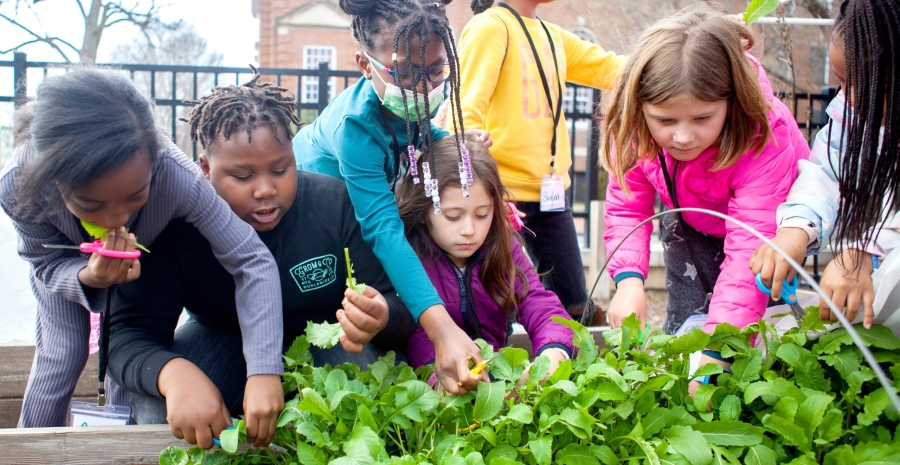Youth Voices Illustrate the Enduring Impacts of the FRESHFARM FoodPrints Program

Research published in Journal of Nutrition Education and Behavior
In FoodPrints, it was like, ‘oh, I can actually, do this myself!’ when we had the chance to take the reins in the kitchen.
That same excitement and joy that came from FoodPrints has carried over into the way that I’m able to enjoy cooking now.
FoodPrints teachers showed us how we could buy food on a budget in a way that is practical and also best for my body.
I love eating the food. I love making the food. I love knowing what food we’re making…I feel good knowing what we’re doing then it feels like, ‘Hey, I’m excited to try this and I’m excited to do this.
These are the voices of current and alumni FRESHFARM FoodPrints students and the basis of the study, “Participant Perspectives on the Impact of a School-Based, Experiential Food Education Program Across Childhood, Adolescence and Young Adulthood,” published this month in the Journal of Nutrition Education and Behavior by George Washington University researchers. This unique study of youth perceptions of the FoodPrints demonstrates the program’s enduring impact over time as alumni expressed appreciation for fresh food, openness to trying new foods, and confidence to make informed food decisions.
Lasting Impacts of the FoodPrints Program
 “Kids who grow vegetables in a school garden and learn how to prepare meals seem to show a lasting desire for fresh, healthy food as young adults,” said lead author Christine St. Pierre, a PhD candidate and researcher at the GW Milken Institute School of Public Health.
“Kids who grow vegetables in a school garden and learn how to prepare meals seem to show a lasting desire for fresh, healthy food as young adults,” said lead author Christine St. Pierre, a PhD candidate and researcher at the GW Milken Institute School of Public Health.
St. Pierre worked with the FoodPrints program to conduct a series of focus groups in Spring 2022 with 78 current and former FoodPrints students to gain a deeper understanding of how the participants perceive and contextualize their FoodPrints experience, and to investigate the most salient and enduring aspects of the program. Based on these focus groups, this research showed three levels of impact:
- Immediate: Students enjoy the food experiences and build connections with peers through shared experiences.
- Beyond the Classroom: Students are involved in household food practices, desire fresh food options at school, and describe shifts in their own and their families’ food intake.
- Sustained: Alumni described appreciation for fresh food, openness to trying new foods, and confidence making informed food decisions.
Perspective of FoodPrints Program Alumni
Alumni – from middle school, high school, and post-high school, even a few students who are now young adults who participated in the early years of the program more than 10 years ago – shared:
FoodPrints really helped you be independent because as you went on in grades, they eased you into being able to do it yourself. So it teaches you to be independent in cooking for yourself.
Being able to collaborate with other peers … and work towards something that you’re all going to eat…is good.
I think that because we started doing FoodPrints at such a young age… it’s kind of been ingrained into me, like the type of foods that you want to be and should be eating, foods that are good for you and having a well-balanced plate.
> Read more student perspectives in the focus group summary
Benefits of Investing in Experiential Food Education in Elementary School
The results confirm the importance of embedding food education in schools: “While we recognize the demands on early education resources and the precious time of teachers,” said St. Pierre, “findings in this study suggest that investment in experiential food education in elementary school can provide an important contribution to the continuation of healthy dietary behaviors as children grow up.”
> Listen to a Podcast interview with the researcher
> Read the full article
> Read about the research in Nutrition Insight


